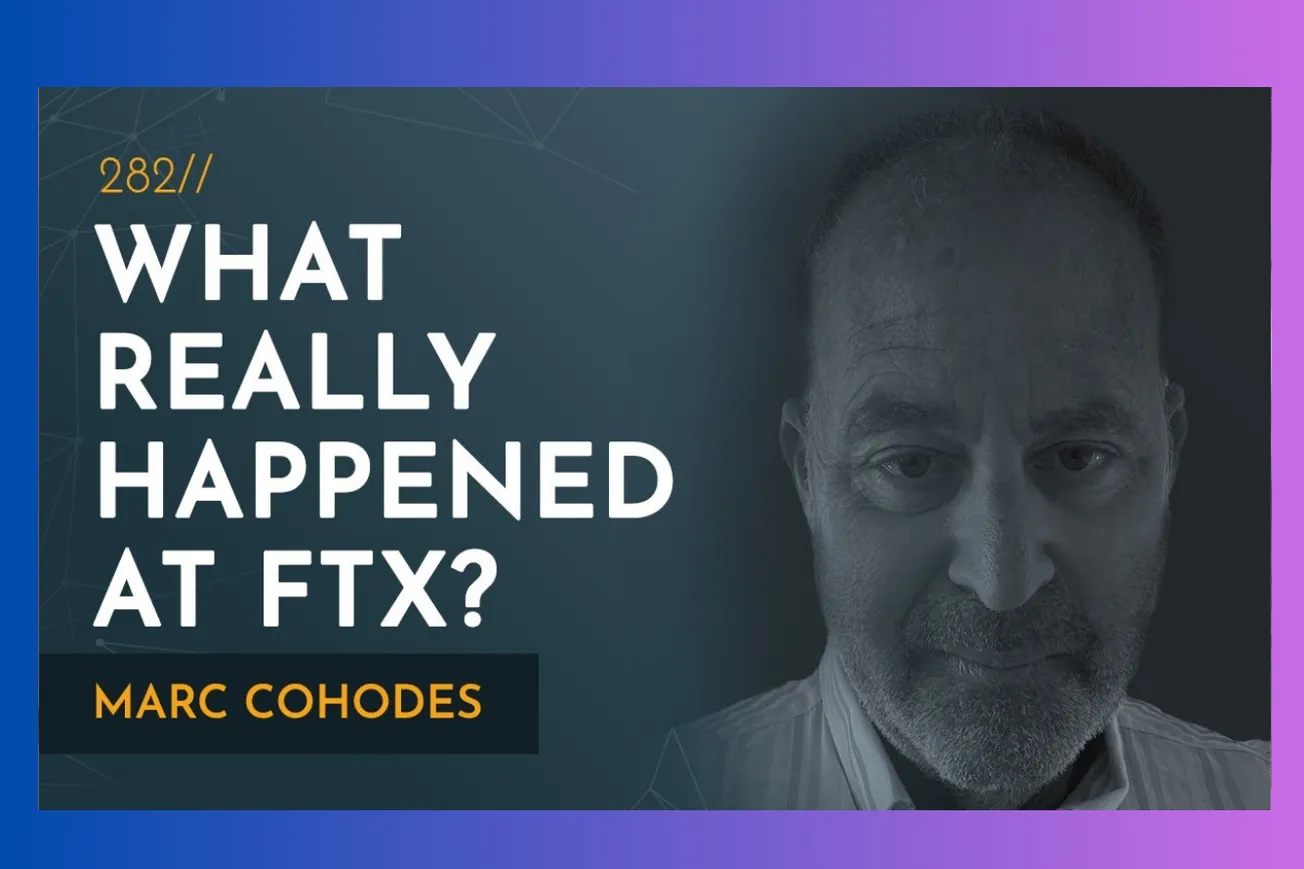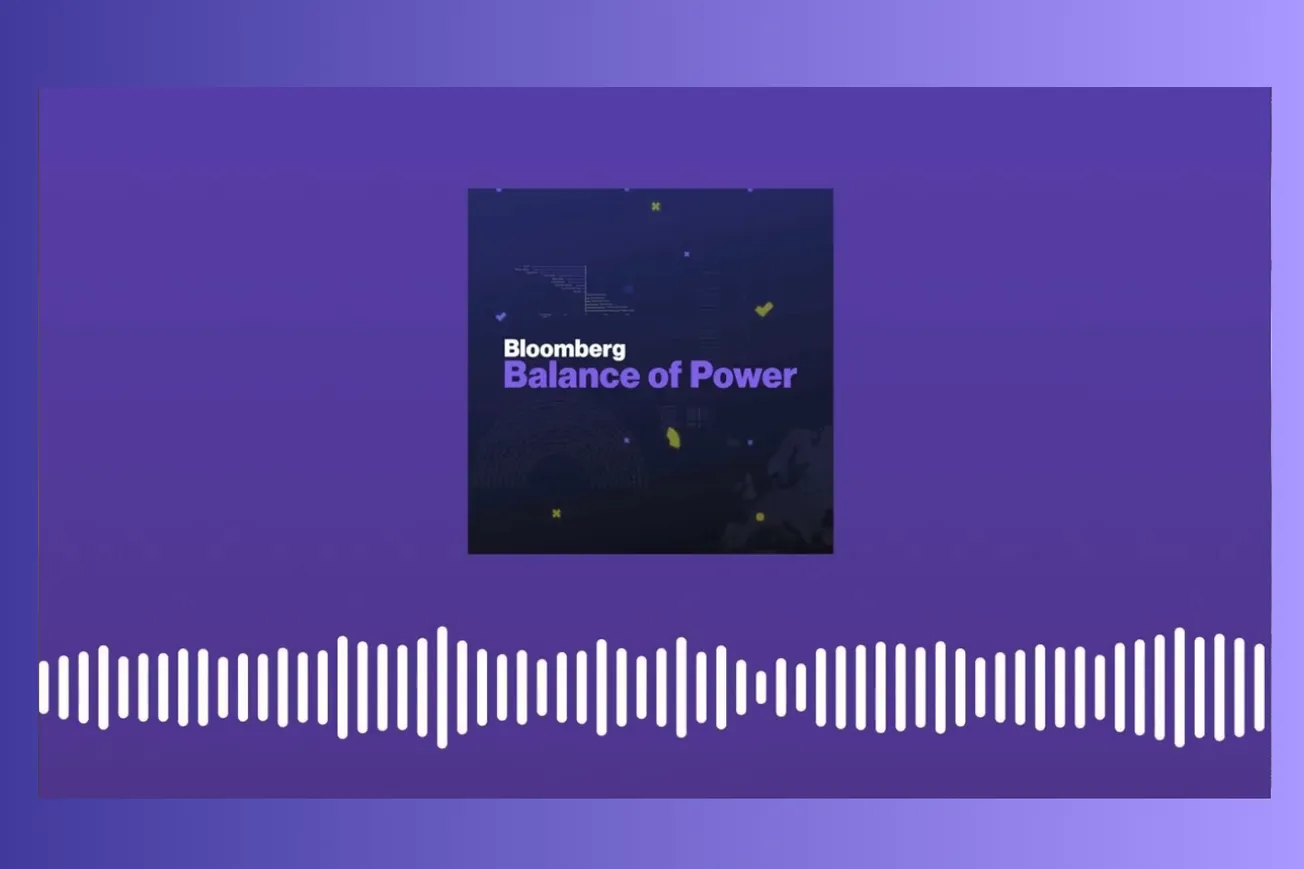Table of Contents
Legendary fraud hunter Marc Cohodes reveals how he identified Sam Bankman-Fried as a criminal months before FTX collapsed, exposing the red flags mainstream media ignored and the deeper conspiracy behind crypto's biggest scandal.
Key Takeaways
- Marc Cohodes identified Sam Bankman-Fried as a fraud in May 2022, calling him "the best short on the board" months before FTX's collapse, despite having no financial position to profit from.
- SBF's story never made sense—no mentor, no training, no detailed explanation of how he made his billions through "crypto arbitrage," and no one who could vouch for his abilities.
- Gary Wang, FTX's mysterious co-founder allegedly worth $11 billion, is virtually invisible—no interviews, minimal online presence, and suspected Chinese Communist Party connections.
- Dan Friedberg, FTX's head of regulatory affairs, previously worked for an online poker company guilty of cheating customers by revealing opponents' cards.
- FTX employed people with no exchange experience or talent, creating what Cohodes calls a "front operation" rather than a legitimate business.
- SBF invested in obvious frauds and Ponzis like Celsius and Voyager, behavior that makes no sense for a legitimate businessman seeking profitable investments.
- Customer money was illegally transferred from FTX to Alameda Research for personal use, constituting clear securities fraud that could result in massive criminal liability.
- Mainstream media outlets like Bloomberg were "too lazy" to investigate despite being provided evidence months before the collapse.
- The political connections—SBF was the second-largest donor to Biden's campaign—may have provided protection and regulatory capture that delayed investigation.
Timeline Overview
- 00:00–08:15 — Introduction and Marc Cohodes Background: Career as short seller, history exposing frauds, 62-year-old former hedge fund manager who has spent decades identifying corporate criminals and fraudsters
- 08:16–16:30 — Early Red Flags and Investigation Origins: How SBF came onto Cohodes' radar in spring 2022, inconsistencies in his story, lack of mentors or training, suspicious rapid rise to prominence
- 16:31–24:45 — The Mystery of Gary Wang: FTX co-founder worth allegedly $11 billion who is virtually invisible online, suspected CCP connections, Sequoia Capital relationship with only back-facing photo
- 24:46–32:20 — FTX Leadership Problems: Dan Friedberg's history with online poker cheating, Constance Wang's background, complete lack of exchange experience across leadership team
- 32:21–39:35 — Investment Red Flags and Business Model: SBF's inexplicable investments in obvious frauds like Celsius and Voyager, front-running customer trades, destroying customer wealth
- 39:36–46:50 — Twitter Investigation and Information Gathering: Using social media to crowdsource information, receiving DMs from former FTX customers, building case through open-source intelligence
- 46:51–54:05 — Mainstream Media Failure: Approaching Bloomberg in July 2022, media outlets being "too lazy" to investigate, political sensitivity around second-largest Democratic donor
- 54:06–61:20 — Political Connections and Regulatory Capture: SBF's relationships with Bill Clinton, Tony Blair, Tom Brady, Maxine Waters, working with regulators to craft favorable crypto regulations
- 61:21–68:35 — Money Laundering Theory: Potential use of FTX as vehicle for Chinese money laundering, converting untraceable crypto into US dollars, Trojan horse theory for CCP operations
- 68:36–75:50 — Regulatory Failures and Capture: Why regulators ignored obvious red flags, revolving door between agencies and crypto companies, financial incentives to look the other way
- 75:51–83:05 — Investment Web and Hidden Connections: SBF's stakes in Robin Hood and other companies, venture capital investments made without available cash, complex web of financial entanglements
- 83:06–90:20 — Criminal Investigation Hopes: What Cohodes wants to see from authorities, finding Gary Wang, holding people accountable, potential losses exceeding $20 billion
- 90:21–95:35 — Personal Motivation and Safety: Why Cohodes pursued this investigation without financial benefit, willingness to take personal risks, operating in broad daylight without fear
The Heat-Seeking Missile Who Spotted the Fraud
Marc Cohodes describes himself as a "heat-seeking missile when it comes to frauds and criminals," and his early detection of Sam Bankman-Fried as a massive fraud represents perhaps his most prescient call. Unlike typical short-selling investigations where financial profit motivates the research, Cohodes pursued SBF "for free" because he believed the world would be better without such a dangerous criminal operating.
Cohodes began noticing red flags around SBF in early 2022, months before the crypto winter and well before any public questioning of FTX's stability. What triggered his interest wasn't financial analysis or balance sheet concerns—it was SBF's inability to coherently explain his own success story during media interviews.
- SBF would "talk in a figure eight" during interviews, providing circular answers that never actually explained how he made his money
- No mentor, no training, no detailed explanation of the supposed "crypto arbitrage" trades that made him billions
- Complete absence of anyone who could vouch for his abilities or validate his claimed trading success
- The narrative of going from Jane Street intern to crypto billionaire had massive unexplained gaps
Cohodes emphasizes that legitimate successful traders can always articulate their big wins and career progression in detail. They remember their mentors, their learning process, and can walk through their major trades step by step. SBF's complete inability to provide this basic professional biography immediately marked him as suspicious.
The fact that media outlets consistently called him "the JP Morgan of crypto" or "the next Warren Buffett" despite his lack of credentials or trackable success only heightened Cohodes' suspicion. When someone with no background suddenly gets massive positive media coverage, experienced fraud hunters know to look deeper.
The Invisible Co-Founder Mystery
Perhaps the most damning evidence in Cohodes' investigation centers on Gary Wang, FTX's mysterious co-founder who was allegedly worth $11 billion yet maintained virtually no public presence. This absence goes far beyond typical CEO privacy preferences—it represents what Cohodes calls an impossible level of invisibility for someone of such claimed wealth and importance.
Gary Wang's online footprint consists of essentially one photo showing his back while facing a computer, used in Sequoia Capital materials where he was listed as an advisor. No interviews, no social media presence, no biographical information, no way to contact him directly. Bloomberg couldn't arrange a joint interview with Wang and SBF despite multiple requests.
- A person worth $11 billion who co-founded a major exchange should be reachable by email at minimum
- Wang's complete absence from media coverage of FTX was itself newsworthy, yet no one in mainstream media questioned it
- The official story claims Wang and SBF met at math camp in Canada and later attended MIT together
- Cohodes suspects Wang may be a Chinese Communist Party operative, noting that wealthy Chinese nationals are typically either party members or money laundering criminals
The China connection raises serious questions about FTX's potential use as a money laundering vehicle. Cohodes theorizes that dirty money could be converted to crypto overseas, transferred through FTX's systems, then converted to clean US dollars—all while avoiding traditional banking oversight that might detect suspicious transactions.
Sequoia Capital's investment in FTX, influenced by Wang's advisory role, resulted in the venture firm writing down their entire position to zero immediately after the collapse. This suggests Wang may have deliberately misled one of Silicon Valley's most sophisticated investors about FTX's true condition.
A Rogue's Gallery of Questionable Characters
Beyond the invisible Gary Wang, FTX's leadership team raised numerous red flags that suggested the operation was more criminal enterprise than legitimate business. Cohodes systematically analyzed the backgrounds of key personnel and found a pattern of inexperience, questionable ethics, and suspect connections.
Dan Friedberg, FTX's head of regulatory affairs, previously worked as legal counsel for an online poker company that was caught cheating customers by revealing opponents' cards to favored players. Friedberg deliberately omitted this history from his CV and LinkedIn profile, attempting to hide his connection to previous fraud.
- For a company seeking regulatory approval and legitimacy, hiring someone with a history of enabling customer fraud makes no sense
- Friedberg's willingness to hide his background suggests awareness that his history would be disqualifying for the role
- Professional poker players who followed Cohodes on Twitter confirmed Friedberg's reputation in the poker community
- The head of regulatory affairs having a track record of regulatory violations epitomizes FTX's dysfunctional culture
Constance Wang, FTX's Chief Operating Officer, attended what Cohodes describes as "CCP University in Canada," adding another potential Chinese Communist Party connection to the leadership team. Combined with Gary Wang's suspected party affiliation, this creates a pattern suggesting possible Chinese intelligence infiltration.
The broader FTX and Alameda Research organizations lacked anyone with legitimate exchange experience or proven business management abilities. Cohodes emphasizes that running a complex financial institution requires genuine talent and experience—skills that were completely absent from SBF's team.
The Investment Pattern That Screamed Fraud
SBF's investment decisions provided perhaps the clearest evidence of fraudulent intent, as he systematically invested in obvious scams and failing businesses in ways that made no economic sense for a legitimate investor. These weren't mistakes or bad timing—they represented behavior consistent with money laundering or deliberate wealth destruction.
During 2022's crypto winter when legitimate businesses were struggling, SBF invested in companies like Celsius and Voyager that were clearly heading toward bankruptcy. He also invested in Anthony Scaramucci's fund-of-funds and other ventures that any competent investor would avoid.
- Legitimate investors wait for fraudulent companies to collapse before investing with legal protections in place
- SBF invested on the "front side" of obvious scams, guaranteeing total losses
- These investments made sense only if the goal was laundering money rather than generating returns
- The pattern suggests either criminal intent or incompetence so extreme it would disqualify him from managing anyone's money
Perhaps most tellingly, SBF made venture capital investments despite FTX and Alameda having no available cash to fund them. This suggests the investments were made using customer deposits that were supposed to remain segregated and available for withdrawal.
The Robin Hood investment exemplifies this pattern—SBF somehow acquired a significant stake in the retail trading platform despite his companies being effectively insolvent. Such investments require either massive undisclosed debt or illegal use of customer funds.
Customer Money Theft and Front-Running Operations
Through his Twitter DMs and network of sources, Cohodes gathered extensive testimony from former FTX customers describing systematic fraud that went far beyond the recent collapse. FTX allegedly front-ran customer trades, manipulated token prices, and generally operated more like a casino rigged against its users than a legitimate exchange.
Front-running involves using advance knowledge of customer orders to trade ahead of them, profiting from the price movements those orders will create. This practice is illegal in traditional financial markets and represents theft from customers who trusted FTX to execute their trades fairly.
- Former large FTX accounts contacted Cohodes describing systematic front-running that destroyed their trading strategies
- FTX allegedly manipulated prices of tokens they issued and traded, creating artificial price movements to benefit the house
- Customer service was deliberately poor for victims of these practices, preventing them from seeking recourse
- The scale of customer abuse made "Citadel look like the Pope" according to Cohodes' sources
The recent revelation that customer deposits were transferred to Alameda Research for personal use represents clear securities fraud. Customer money was supposed to remain segregated and available for withdrawal, not used as personal funding for SBF's lifestyle and investments.
This theft likely occurred over months or years rather than as a recent desperate measure, suggesting systematic criminality rather than poor judgment during a crisis. The magnitude of missing customer funds—potentially exceeding $10 billion—indicates this was always a fraudulent operation rather than a legitimate business that later went wrong.
Media Complicity and Regulatory Capture
Cohodes' attempts to interest mainstream media in his FTX investigation reveal broader problems with financial journalism and regulatory oversight. Despite providing detailed evidence of fraud in July 2022, major outlets like Bloomberg declined to investigate, claiming the story would require "too much work."
The political sensitivity around SBF's status as the second-largest donor to Joe Biden's presidential campaign may have contributed to media reluctance. Exposing a major Democratic donor as a fraud during an election year would have been politically explosive, possibly influencing coverage decisions.
- Bloomberg's crypto team in London explicitly stated the investigation would be "too much work" and take "too much time"
- Cohodes urged investigation before the November 2022 elections due to SBF's political importance
- Mainstream media's laziness allowed obvious fraud to continue operating for months longer than necessary
- Financial journalists increasingly rely on press releases and official statements rather than conducting independent investigations
Regulatory capture also played a crucial role in FTX's ability to operate without oversight. SBF worked closely with regulators to craft crypto regulations that would favor his business model while constraining competitors. This access likely provided advance warning of regulatory actions and protection from investigation.
The revolving door between regulatory agencies and crypto companies creates powerful incentives for officials to avoid aggressive enforcement. A former SEC commissioner left his $300,000 government job to become chief legal officer at Robin Hood, reportedly earning between $80-200 million in his first year—demonstrating the financial rewards available to cooperative regulators.
The Money Laundering Theory
Cohodes proposes that FTX may have served as a sophisticated money laundering operation, allowing dirty money from China and other sources to be converted into clean US assets through crypto transactions. This theory explains several otherwise inexplicable aspects of FTX's operations and leadership structure.
The basic mechanism would involve converting dirty money to cryptocurrency overseas, transferring it through FTX's systems to avoid traditional banking oversight, then converting it to US dollars or treasury securities. Crypto's pseudonymous nature and regulatory gaps make such transactions difficult to trace or prevent.
- Chinese money laundering operations need sophisticated financial infrastructure to move funds into US markets
- FTX's offshore structure and regulatory gaps made it ideal for such operations
- Gary Wang's suspected CCP connections would provide necessary political protection in China
- SBF's political donations and regulatory relationships would provide protection in the US
This theory explains why FTX invested in obvious frauds and failing businesses—the goal wasn't generating returns but rather moving money through complex transactions that would obscure its origins. It also explains the invisible Gary Wang, who would need to maintain a low profile to avoid intelligence agency scrutiny.
The scale of money involved—potentially tens of billions—would be consistent with state-level money laundering operations rather than simple business fraud. Chinese intelligence services have strong incentives to establish financial infrastructure that could support their operations in the US and allied countries.
Why Regulators Failed So Spectacularly
The regulatory failure around FTX represents more than simple incompetence—it reflects systemic capture of oversight agencies by the industries they're supposed to regulate. Cohodes argues that regulators have fundamental conflicts of interest that prevent them from doing their jobs effectively.
Career incentives encourage regulatory officials to maintain good relationships with industry players who might offer lucrative private sector jobs later. Aggressive enforcement can harm officials' post-government earning potential, creating pressure to go easy on potential violations.
- Former regulators can earn massive salaries at companies they previously oversaw
- Current regulators know that aggressive enforcement could close off future opportunities
- Political appointees face pressure to avoid actions that might harm their party's major donors
- Technical complexity of crypto provides cover for officials who prefer not to understand the systems they regulate
The speed of technological change also challenges traditional regulatory approaches designed for slower-moving industries. By the time agencies understand new technologies and develop appropriate oversight frameworks, the industry has already moved on to new innovations that exploit different gaps.
SBF's political donations and regulatory relationships provided additional protection beyond normal industry capture. As the second-largest donor to Biden's campaign, he had direct access to political leaders who could influence regulatory priorities and enforcement decisions.
The Bigger Story Still to Come
While the FTX collapse has exposed basic fraud and customer theft, Cohodes suggests the full story involves much larger criminal operations that have yet to be revealed. He has been working with a Pulitzer Prize-winning journalist on a comprehensive investigation that will expose additional aspects of SBF's criminal enterprise.
The scale of potential losses exceeds $20 billion when including customer deposits, token devaluations, and indirect damages to other crypto projects. This magnitude suggests coordination with other criminal enterprises rather than simple business fraud by an incompetent entrepreneur.
- The investigation reveals systematic customer abuse and fraud extending back years
- Political and regulatory corruption enabled the operation to continue despite obvious red flags
- International money laundering connections may involve foreign intelligence services
- The story demonstrates broader problems with crypto industry oversight and political capture
Cohodes emphasizes that this investigation represents his most important work despite providing no financial benefit to him personally. At 62 years old, having already established his reputation and financial security, he pursued this case purely because he believed SBF represented an exceptional threat to innocent investors and the broader financial system.
The challenge now lies in holding accountable not just SBF and his immediate associates, but also the enablers in media, regulatory agencies, and political circles who allowed obvious fraud to operate with impunity for years.
Conclusion and Practical Implications
Marc Cohodes' investigation of Sam Bankman-Fried demonstrates both the power of independent financial analysis and the systemic failures that allow massive fraud to flourish in modern markets. His ability to identify criminal behavior months before the collapse, despite having no financial incentive to do so, highlights how obvious the red flags were to anyone willing to look critically. The story reveals deep problems with regulatory capture, media complicity, and the political protection that money can buy in contemporary America. Cohodes' work serves as a masterclass in fraud detection while exposing the institutional failures that make such frauds possible.
Practical Implications:
- Trust But Verify Leadership Claims: Always demand detailed explanations of how business leaders made their money, who trained them, and who can vouch for their abilities
- Investigate Invisible Co-Founders: When key executives maintain suspicious levels of privacy, treat this as a major red flag requiring explanation
- Follow the Money Trail: Look for investment patterns that make no economic sense, especially investments in obvious failing ventures
- Question Regulatory Relationships: Be suspicious when companies work too closely with regulators or when officials have clear conflicts of interest
- Scrutinize Political Connections: Major political donations by business leaders often signal attempts to buy protection from oversight
- Verify Customer Treatment: Seek independent testimony from former customers and employees about actual business practices
- Demand Transparency in Offshore Operations: Companies operating in tax havens with minimal oversight should face heightened scrutiny
- Watch for Front-Running and Market Manipulation: Trading platforms should be evaluated based on actual customer experiences, not marketing claims
- Recognize Media Capture: Financial journalism increasingly fails to investigate complex stories, requiring independent research and verification
Predictions About the World to Come:
- Criminal Prosecutions Will Expand: SBF's arrest represents the beginning of a broader investigation that will ensnare other crypto industry figures and political enablers
- Regulatory Overhaul Will Follow: The FTX collapse will force fundamental changes in crypto oversight, ending the era of self-regulation and political protection
- International Money Laundering Investigations Will Intensify: Intelligence agencies will scrutinize crypto platforms for foreign influence operations and money laundering schemes
- Media Credibility Crisis Will Deepen: The failure to investigate obvious fraud despite clear evidence will further erode trust in mainstream financial journalism
- Political Donation Reforms Will Emerge: The SBF scandal will trigger new restrictions on crypto industry political contributions and lobbying activities
- Customer Protection Standards Will Strengthen: Segregation of customer funds and audit requirements will become mandatory across crypto platforms
- Offshore Financial Havens Will Face Pressure: Countries hosting crypto exchanges will face international pressure to improve oversight and transparency
- Venture Capital Due Diligence Will Improve: Investment firms will face scrutiny for funding obvious frauds and failing to conduct proper background checks
- Short Sellers Will Gain Credibility: Independent investigators like Cohodes will be taken more seriously as their warnings prove prescient
- Systemic Risk Awareness Will Increase: Policymakers will recognize that crypto fraud can have broader economic implications requiring coordinated response





